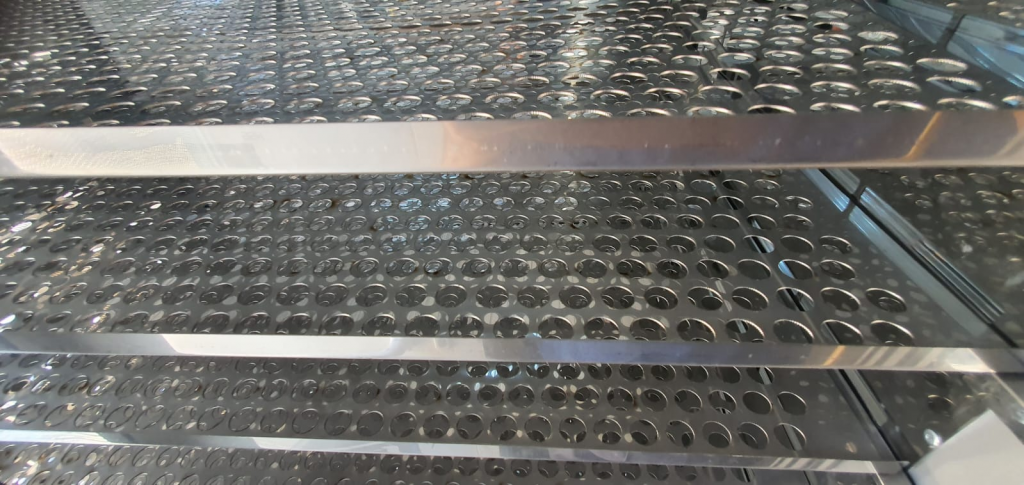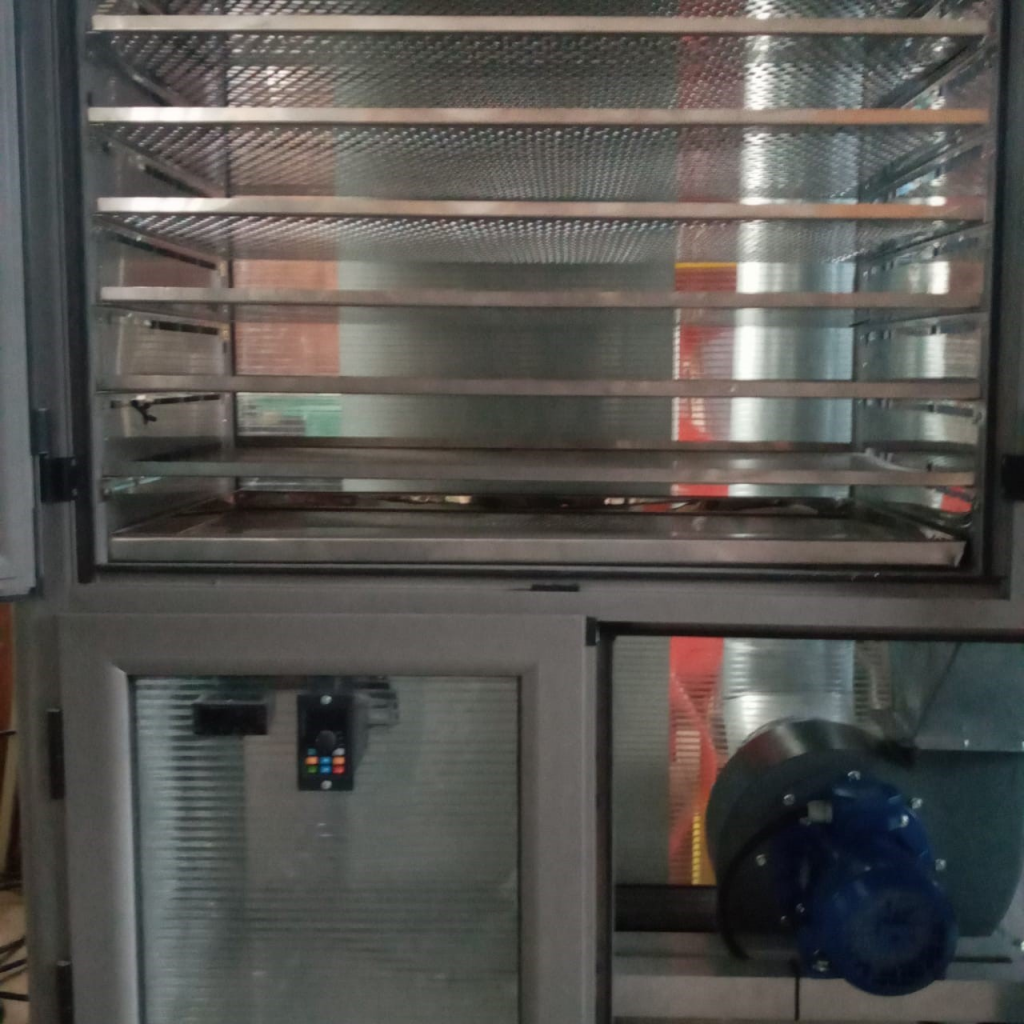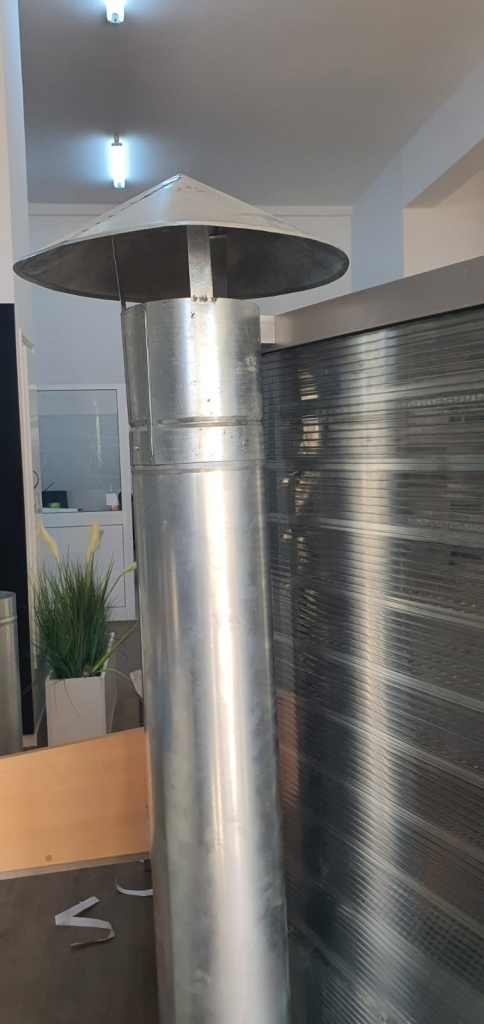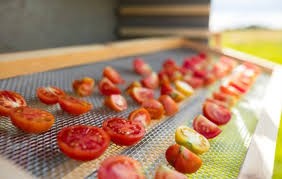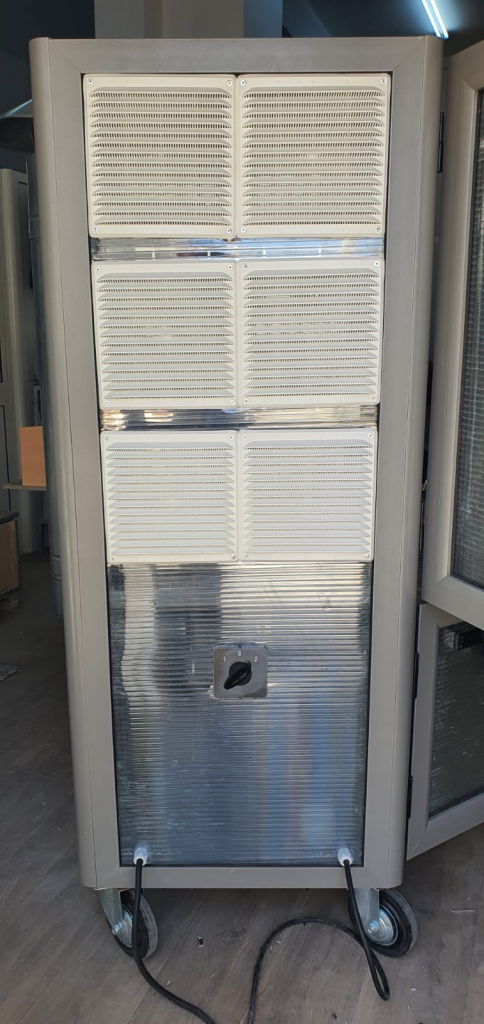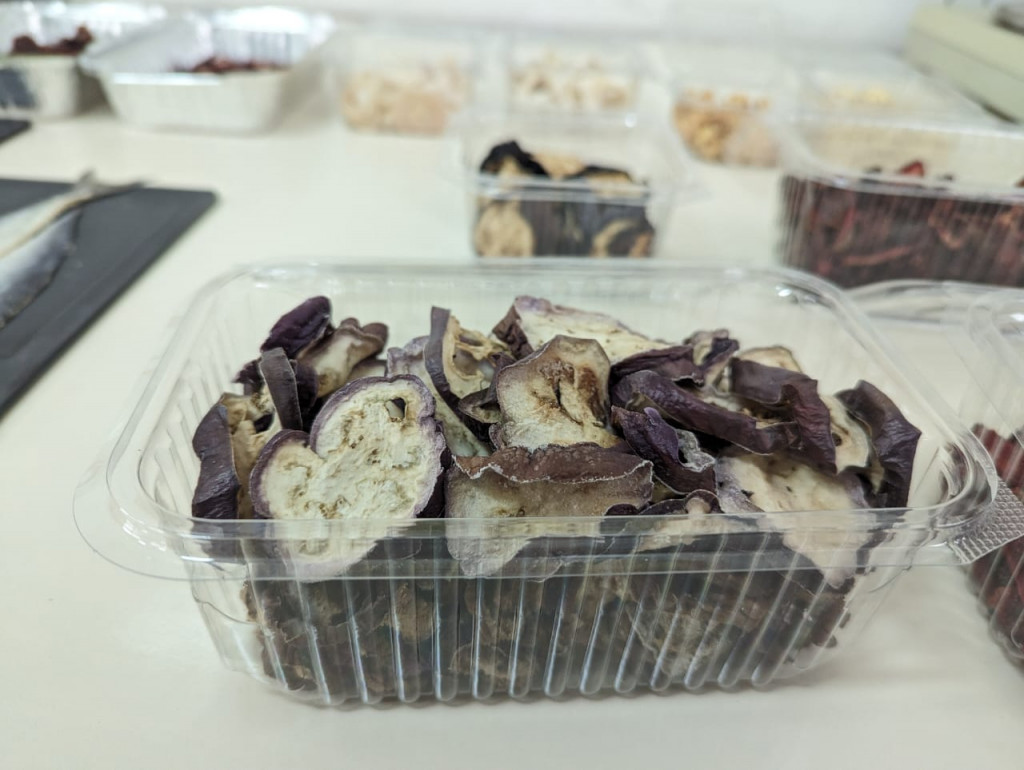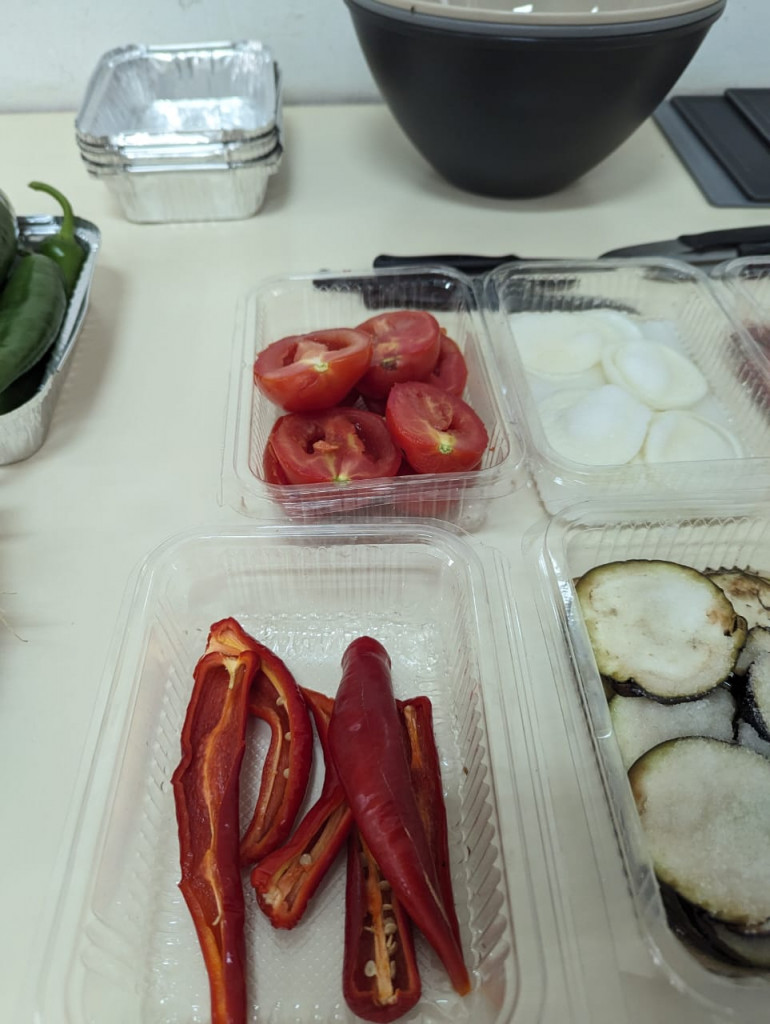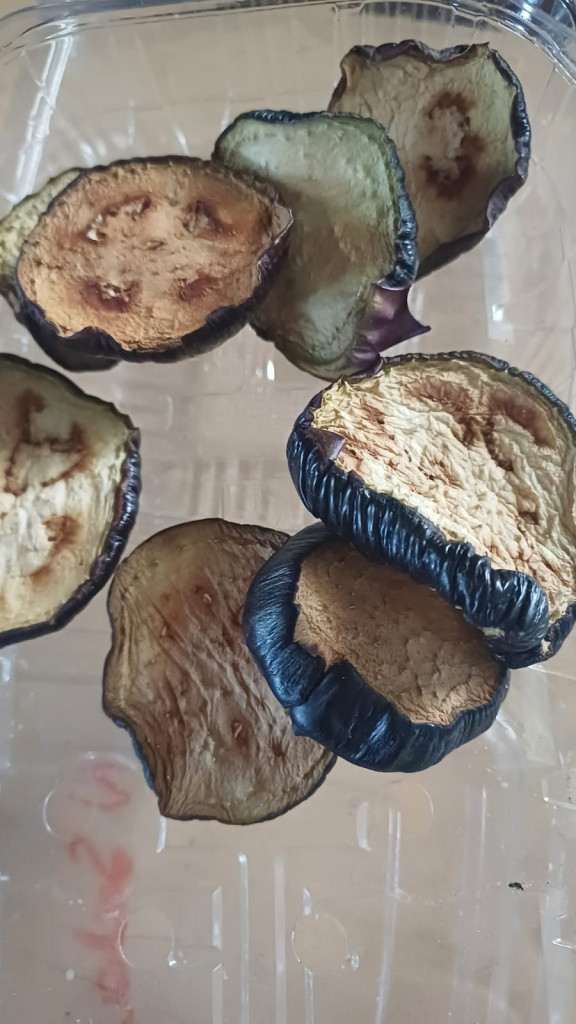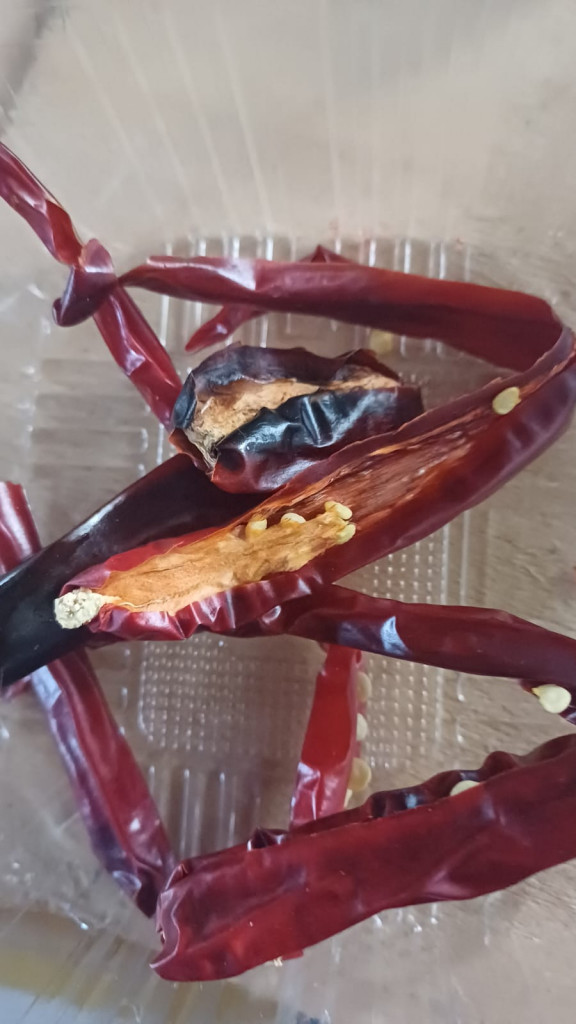Low-cost and eco-friendly solar dryer for fruits and vegetables
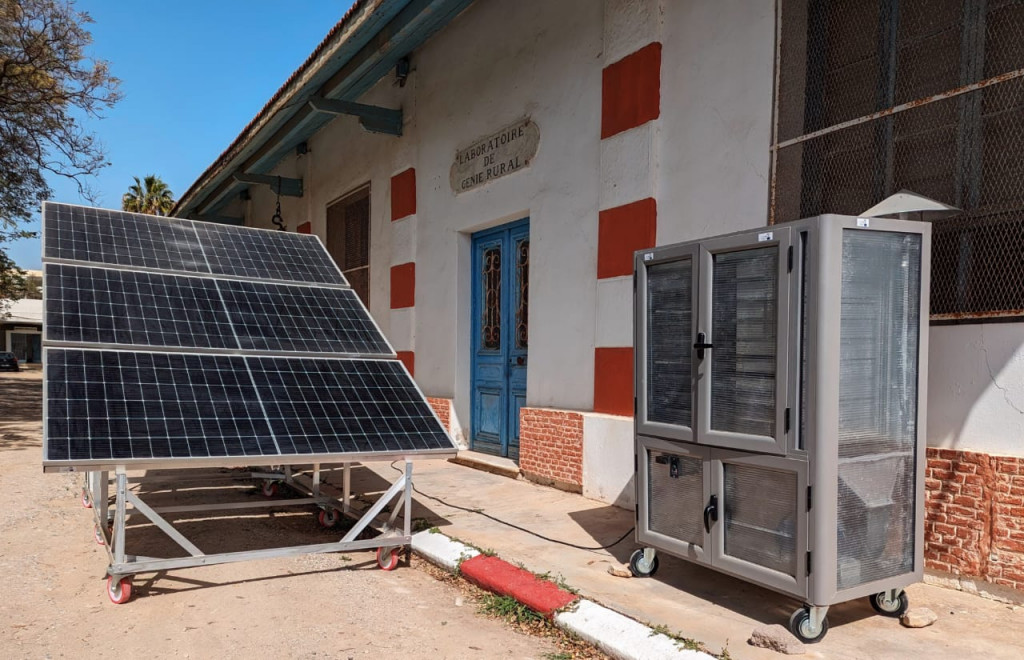
With the aim of provisioning a low-cost and eco-friendly technology that will help in the conservation of fresh fruits and vegetables by processing them under controlled conditions, the FoodLAND partner Tunisian National Institute of Agronomy (INAT), led by Dr Faten Khamassi, has designed and tested a solar dryer with photovoltaic panels as part of the project’s technological research for primary processing.
The forced convection solar dryer is composed of a chamber with several drying racks in food-grade stainless steel and another chamber to house the blower and control units. The blower generates variable horizontal air flow, so air speed is adjustable, which is transferred to the chamber where food is placed on the racks. The power supply is provided by 6 photovoltaic panels connected to the dryer, but it can also be operated by replacing the photovoltaic panels with electricity if required.
This dryer was initially produced and tested in the Jendouba Food Hub, in Tunisia, and then validated and evaluated in the Mukurweini (Kenya) and Nakaseke (Uganda) Food Hubs. A variation of the first dryer was developed in Kenya, consisting of a solar cabinet dryer with a concentrating collector with a solar-powered fan and air heater, with provision for electrical heating using the solar battery when there is no sunshine.
The drying procedure included a pre-treatment of osmotic dehydration as a measure to optimize the drying process. Food products with high moisture content like fruits and vegetables would require a long drying time, and the modification of products’ properties as a consequence of the drying process might affect the quality of the final product. Osmotic dehydration has been used for many years to remove water from fresh fruits and vegetables and increase their storage stability. Fruits and vegetables are placed in an osmotic solution, which creates a concentration gradient between the solution and the intracellular fluid. This decreases raw materials’ moisture content and shortens drying time, which may preserve products’ properties. Using different parameters for dehydrating different food products, a reduction of 12-16% of moisture content was reached.
During the solar drying trials, the researchers studied the impact of osmotic dehydration on the drying process, compared drying kinetics and behaviour, and also evaluated the final characteristics of various fresh fruits and vegetables: tomatoes, strawberries, and eggplant. Consumers’ acceptance of rehydrated products was assessed as well.
Further characterisation and market studies are planned for the products derived from this processing technology. However, the partners in charge of it have already started disseminating the technology, offering training on the use of it to farmers, especially women farmers.

